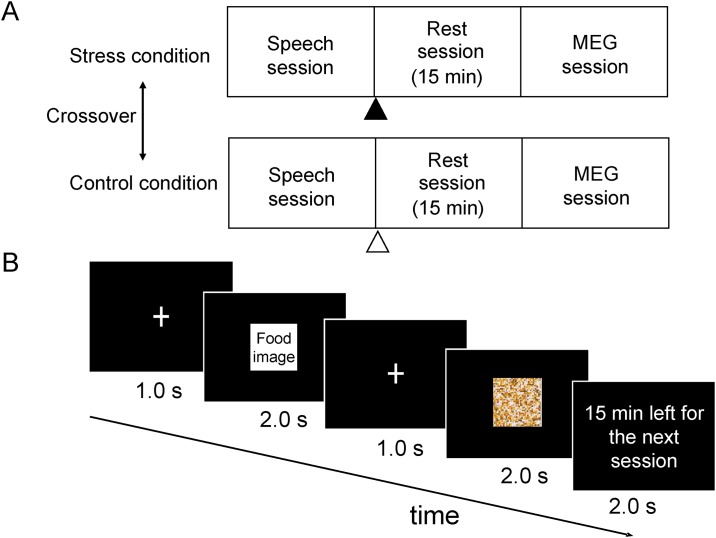Fig 1. Experimental design.
(A) This study consisted of two conditions: a stress and a control condition. Each condition was conducted on a different day in a two-crossover fashion. The mean interval between the two experimental days was approximately 1 week. Both conditions consisted of a speech session (i.e., a speech and mental arithmetic tasks), a 15-min rest session, and a magnetoencephalography (MEG) session. After the speech session under the stress condition, the participants were instructed to perform “another speech session” after the MEG session because their achievement in the speech session was poor (▲). On the other hand, under the control condition, they were instructed to fill out a simple questionnaire after the MEG session (Δ). (B) The visual stimulus presented during the MEG session consisted of a fixation cross for 1,000 ms followed by food or mosaic images for 2,000 ms. This visual presentation sequence was played 260 times with the food and mosaic image presented randomly (i.e., the food and mosaic images were each presented 130 times). The time remaining before the start of the next session was presented for 2,000 ms approximately every 78 s so that the participants would remember that they had to perform another session (i.e., “another speech session” under the stress condition and a “questionnaire session” under the control condition).

